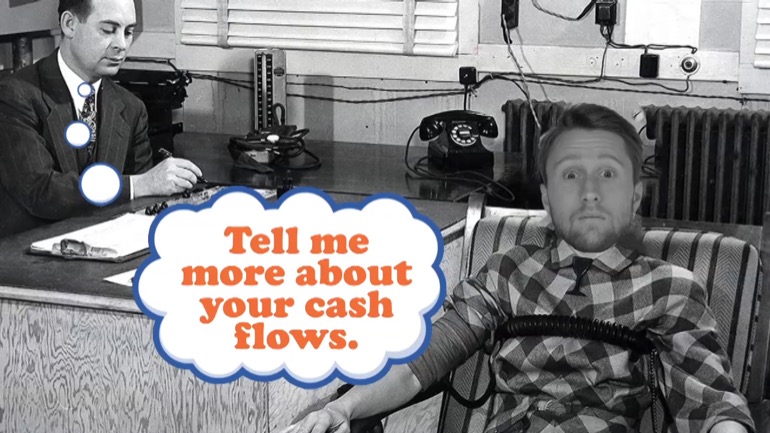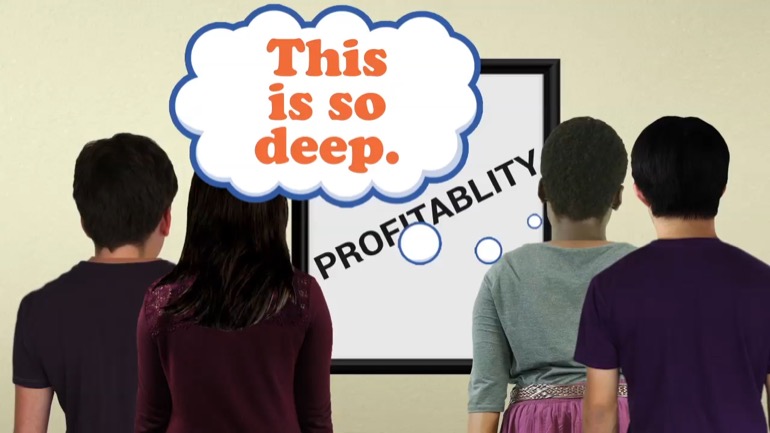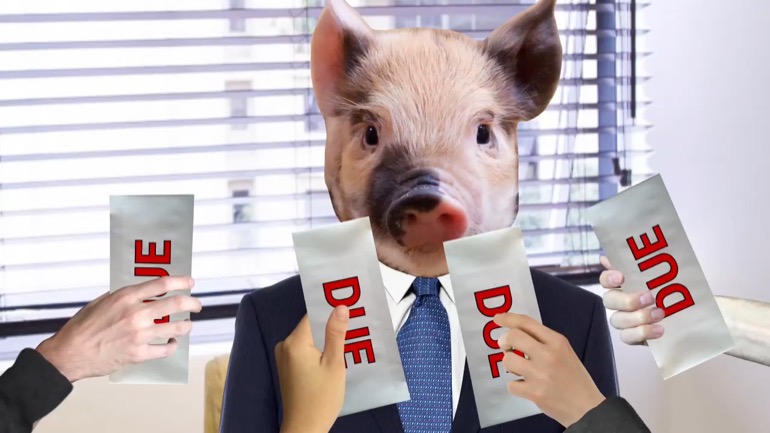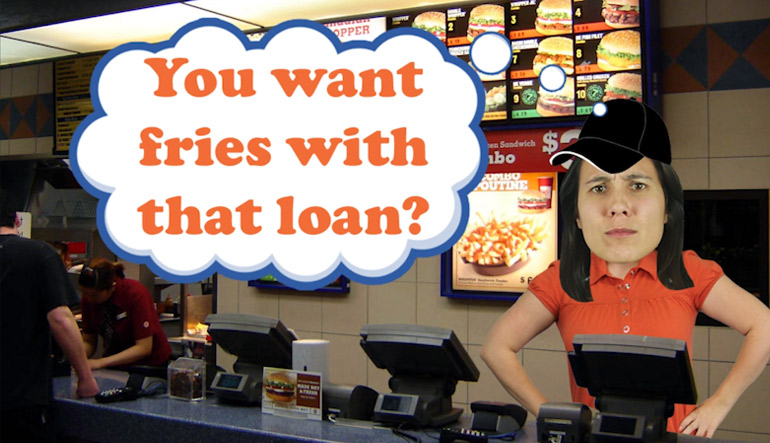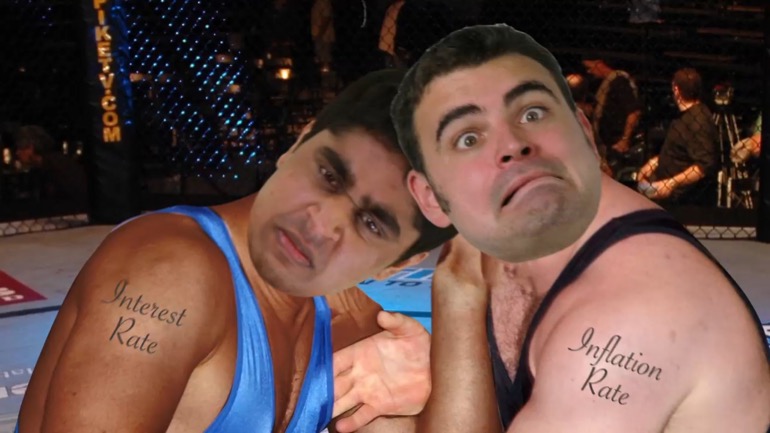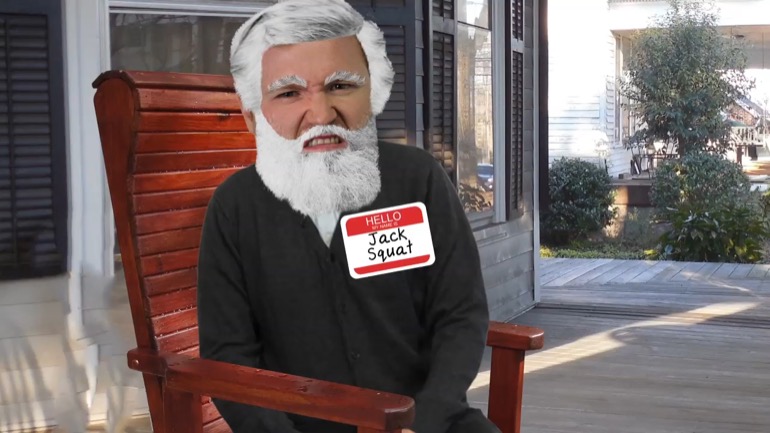ShmoopTube
Where Monty Python meets your 10th grade teacher.
Search Thousands of Shmoop Videos
Principles of Finance Videos 166 videos
How is a company... born? Can it be performed via C-section? Is there a midwife present? Do its parents get in a fight over what to name it? In thi...
Company Formation, Structure, and Inception: Unit Intro. Sorry, Leo DiCaprio fans—we're not going to be breaking down the plot of Inception. We'r...
Okay, so you want to be a company financial manager. It's basically up to you to make money for the shareholders. It would also be swell if you mad...
Principles of Finance: Unit 5, The Process of Bankruptcy 7 Views
Share It!
Description:
The process of bankruptcy is a process we here at Shmoop hope to never personally experience, but we're certainly willing to teach you about.
Transcript
- 00:00
Principles of finance a la shmoop... the process of bankruptcy
- 00:07
so what happens when a company goes bankrupt well let's bring back our
- 00:12
little infamous sauce company and jiggle the numbers the company was doing just [People celebrating company opening]
- 00:16
fine unleveraged that is it had no debt a hundred million dollars in cash on the
- 00:22
books and was growing at about 10 percent a year not awesome but good
Full Transcript
- 00:26
solid tons of room to do small things with their cash and you know move on but
- 00:31
no the CEO had to be a hero instead and well he turned it into a huro, you know [Person grabs sauce bottle]
- 00:37
those things in New York and the things that they push up on the street....
- 00:39
so the company took out a whole bunch of debt bought a
- 00:44
bunch of competitors and well here's the sorry tail yeah so what is the story [Sauce boiling in a pot]
- 00:49
here the numbers are telling us well the company took out two billion dollars in
- 00:53
loans to vastly overpay to buy out competitors and it never locked in its
- 01:00
interest rate so in the middle year it paid seven and a half percent interest
- 01:04
on two billion dollars and it eked out 50 million of profits which is just
- 01:09
dandy but then in the next year without the original management sticking around
- 01:14
well the acquisition sucked revenues went down dramatically and the company [Revenues of sauce company decline]
- 01:19
actually lost money big money well problems were exacerbated by the
- 01:23
fact that the company hadn't locked in interest rates on the two billion
- 01:27
dollars it owed so when prevailing rates went up another two and a half percent [prevailing rates rises]
- 01:32
well the company found its new rate to be ten percent on the two billion
- 01:36
dollars it still owed and with two hundred million dollars in interest
- 01:40
expenses while the company lost a hundred fifty million dollars which then
- 01:45
chewed up all of the excess cash it originally had and in the following year
- 01:50
it would in fact fail to be able to pay even its interest expenses yeah
- 01:55
bankruptcy so what happens now well in essence the lenders the people who
- 01:59
loaned him the money own the company as part of a contract they promised when
- 02:03
they sign the two billion dollar bond paperwork but the lenders don't want to
- 02:07
own the company lenders like golf and long lunches they don't like having to [People having lunch]
- 02:12
run you know a sauce company especially one that is dying so the lenders have a
- 02:17
few choices in reality most of the time banks don't
- 02:21
take risk that is they "renegotiate the terms of the loan" with the
- 02:27
company in this case well the bank might add to the principal amount borrowed [Principal amount increased]
- 02:31
like make it 2.3 billion so that the company has time to shut down
- 02:35
unprofitable divisions has enough capital to pay the lenders their
- 02:39
interest and keep operating essentially the bank's loan the company
- 02:43
an additional three hundred million dollars so that the company can pay back
- 02:47
the banks the interest next year and keep going and then you know the bank [Man playing golf]
- 02:51
management can keep working on their putting and short game and hopefully
- 02:55
retire soon well the lenders are making the bet here that the company can figure
- 02:59
out a way to survive long enough to pay back the owners debt that it's carrying
- 03:03
and remember lenders don't care about the equity here they just care about
- 03:08
getting back to their debt because in this illustration the lenders aren't [Money transfers from sauce bottles to lenders]
- 03:12
actually taking possession of the company it's still run by the previous
- 03:16
players although with a new CEO at the helm and things you know continue but [Employees of the sauce company]
- 03:21
there are other times when banks will actually take possession of a company
- 03:25
and they have a choice if there are assets to be auctioned off well then
- 03:28
maybe they call eBay and do that you can imagine in this case the old sauce [Sauce pot listed for sale on eBay]
- 03:33
company might have been worth a billion dollars to you know Geico Heintz and
- 03:38
Warren Buffett...Warren's good for his money he's got the cashola to pay day
- 03:42
one so now at least the two billion dollars have failed debt after selling
- 03:46
off that division is down to "only" a billion dollars but there is
- 03:51
still the acquisition which they paid two billion dollars to buy and now [man holding pitta bread]
- 03:55
worth probably something less than a billion dollars well maybe then the bank
- 03:59
owners auction it off and collect six hundred fifty million, write off the
- 04:03
remaining 350 and as bad loans go and it's not so terrible and hopefully they
- 04:08
live to fight another day and remember they collected some
- 04:11
interest along the way so it's not like they lost everything although this was
- 04:14
not good all right well often in addition all of the above
- 04:17
there are huge tax losses in these situations which are actually highly
- 04:21
valuable believe it or not so let's say an acquirer has a thirty percent tax [30% tax rate of enquirer on whiteboard]
- 04:25
rate like it's Microsoft or Google or General Foods they're paying 30 percent
- 04:30
tax and the acquired piece bolted on unsuccessfully to the sauce
- 04:34
company had 700 million dollars in accumulated losses well if the acquirer [Sauce company with 700 million dollar losses]
- 04:39
has say three billion dollars in pre-tax or operating profits in a given year
- 04:44
well often that 700 million dollars in "phantom" tax losses can be
- 04:49
used as a direct tax edge specifically that means that on its own the three
- 04:54
billion dollars of profits would carry a 30 percent tax rate or 900 million
- 04:57
dollars in taxes paid but the acquired piece would essentially remove 700 [700 million dollar losses highlighted]
- 05:02
million dollars of those profits so that on a tax basis the highly profitable
- 05:06
companies 3 billion dollars in profits looks to the IRS in a more like 2.3
- 05:12
billion dollars in profits that is the 700 million dollars is subtracted from
- 05:16
the company's profits the profitable successful ones profits and that company
- 05:20
now pays tax on 2.3 billion of 30% or 690 million instead of that whole
- 05:25
shabang 3 billion it's not quite that simple in real life but you get the gist
- 05:30
here the old taxes were 900 million the new ones are now 690 million so the [Old and new taxes]
- 05:36
"asset" of the tax loss that it acquired in the acquisition ended up
- 05:41
being worth 200 million dollars in tax savings to the acquirer sounds crazy but
- 05:46
that's how things work sorta welcome to America [Man holding up small America flag]
- 05:49
no kneeling but yes you future lawyers out there technically this isn't exactly
- 05:53
how it works and there are tons of tests that tax loss transfers have to meet
- 05:58
like it has to be the same basic product in the same basic industry in the same
- 06:02
basic region and so on but for our purposes the key idea here is that the
- 06:06
tax loss is actually worth something and yes that's odd but true and that's one
- 06:11
way you go bankrupt you borrow too much money you can't pay it back and then [Bank transfers money to a person]
- 06:15
well the banks end up owning whatever it is you're sauce company or towel
- 06:18
distribution company or whatever it is you do and if you really want the nitty
- 06:22
and the gritty we have videos on chapter 7 versus chapter 11 style bankruptcy
- 06:26
whole bunch of flavors of the B word you just know you want to avoid it [Selection of ice cream flavors]
Related Videos
GED Social Studies 1.1 Civics and Government
What is bankruptcy? Deadbeats who can't pay their bills declare bankruptcy. Either they borrowed too much money, or the business fell apart. They t...
What's a dividend? At will, the board of directors can pay a dividend on common stock. Usually, that payout is some percentage less than 100 of ear...
How are risk and reward related? Take more risk, expect more reward. A lottery ticket might be worth a billion dollars, but if the odds are one in...



















































